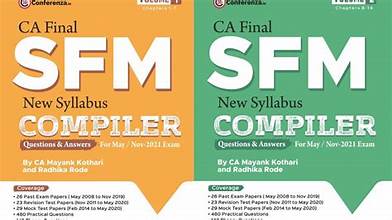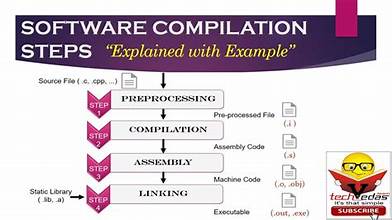SFM Compile: A Complete Guide to Compiling Models and Animations in Source Filmmaker

Introduction to SFM Compile
In the world of 3D modeling and animation, Source Filmmaker (SFM) has become one of the most powerful and popular tools for creating intricate animations and cinematics. However, like any complex program, working with SFM can be a challenge, especially when it comes to compiling models and animations. The process of SFM compile is essential for transforming your creative work into something that the engine can recognize and render, and it can be tricky to get right. In this article, we’ll delve into what SFM compile entails, its importance in the workflow, and how to effectively compile your models and animations.
Table of Contents
What is SFM Compile?
The term “SFM compile” refers to the process of converting 3D models and animations into a format that the Source engine can understand. In Source Filmmaker, this involves taking raw assets, like a model or animation, and compiling them into a format that is both optimized and usable within the SFM environment. The SFM compile process involves several steps, including converting files into the correct format (such as .mdl for models, .ani for animations) and compiling them into a format suitable for rendering in the SFM editor.
Why is SFM Compile Necessary?

The SFM compile process is a vital step in any animation or modeling project in Source Filmmaker because it ensures that the 3D assets you’ve created are properly prepared to work with the Source engine. Without compiling, models and animations might not display correctly in the editor, or they might not work at all. Compiling not only makes the assets compatible with the engine, but it also helps improve performance, ensuring smoother playback and rendering during your animation.
The SFM compile process optimizes the assets by creating LODs (Level of Details), which help manage how the models are rendered depending on their distance from the camera. This optimization reduces the strain on the computer and ensures that your animation runs smoothly without unnecessary performance drops.
The SFM Compile Process: Step-by-Step Guide

To perform a proper SFM compile, you must follow a few crucial steps. This process can seem daunting, but with practice, it becomes much easier. Below, we break down the steps involved in compiling your models and animations for Source Filmmaker.
Step 1: Preparing Your Model or Animation
Before jumping into the SFM compile process, you need to ensure that your 3D model or animation is properly prepared. If you’re working with a model, this means making sure all textures, materials, bones, and meshes are in place. If you’re working with an animation, you need to ensure that the animation itself is complete and ready for export.
- Model Preparation: Make sure your model is properly UV-mapped and all necessary textures are applied. It’s also essential to ensure that the model’s skeleton is rigged properly for animation.
- Animation Preparation: If you’re animating, ensure that your animation is clean and that all keyframes are set. Your animation should be error-free before proceeding to the compile step.
Step 2: Using the Crowbar Compiler for SFM Compile
Once your model or animation is ready, you’ll need to use a compiler to handle the SFM compile process. The Crowbar compiler is one of the most popular tools for compiling Source models. Crowbar is a free, easy-to-use tool that streamlines the SFM compile process, and it’s favored by many SFM creators for its efficiency.
To use Crowbar:
- Download and install the Crowbar tool.
- Launch Crowbar and set up the necessary configurations. You’ll need to specify the paths for your model files, as well as the destination folder where the compiled files will go.
- After setting up, select the appropriate options for your project (e.g., compile models, animations, or both).
- Start the SFM compile process, and Crowbar will handle the rest, converting your files into a usable format for Source Filmmaker.
Step 3: Troubleshooting Common Compile Errors
While compiling, you may encounter errors, which can be frustrating. The SFM compile process is sensitive, and certain mistakes during preparation can cause issues in the final result. Some common compile errors include:
- Missing textures: If textures are missing or improperly linked to your model, it won’t show up correctly in SFM. Ensure all textures are properly referenced in your model’s file before compiling.
- Incorrect bone names: If the bones in your model are not properly named according to the Source Filmmaker standards, the SFM compile process may fail. Double-check the bone structure and naming conventions.
- Animation issues: If your animation files are incorrectly formatted or the timing of the animation is wrong, this can cause errors during compilation. Ensure your animation is complete and properly set before compiling.
Step 4: Verifying the SFM Compile Output
Once the SFM compile process is complete, it’s essential to verify that everything was compiled correctly. This means checking the output files (typically .mdl for models and .ani for animations) to make sure they work as intended within Source Filmmaker.
- Test the model: Load the compiled model into SFM and ensure that it displays correctly. Make sure all textures, rigging, and animations are intact.
- Test the animation: Play the animation inside SFM to ensure that it runs smoothly without errors or glitches.
If everything looks good, you’ve successfully completed the SFM compile process!
Advanced Tips for SFM Compile Success
While the basic SFM compile process is relatively straightforward, there are several advanced techniques you can employ to ensure your assets are of the highest quality.
- Optimize Your Models and Animations: During the compile process, take the time to optimize your assets. This can include reducing polygon counts, optimizing textures, and creating LOD models. Optimization ensures that your animation runs smoothly and doesn’t suffer from performance issues.
- Use Reference Files for Complex Models: If your model is complex, consider using reference files to streamline the SFM compile process. Reference files link different elements of the model, such as textures and bones, making it easier to compile large or intricate models.
- Monitor the Compile Log: Crowbar, as well as other compile tools, generates a log of all processes and errors during compilation. Pay attention to the log to identify any issues and fix them early in the process.
- Regular Backups: Always make regular backups of your project files, especially before starting the SFM compile process. This ensures that you can always recover from any errors or failures.
Also read Best Crypto to Buy Now: Top Cryptocurrencies for Investment in 2025
Conclusion: Mastering the SFM Compile Process
The SFM compile process is an essential part of the workflow for any SFM creator. While it may seem intimidating at first, it’s a skill that can be mastered with practice. By following the steps outlined above, preparing your assets correctly, and using tools like Crowbar, you can ensure that your models and animations are compiled and ready to be used in Source Filmmaker.
Remember, the SFM compile process is not just about making your assets work in the engine—it’s also about optimizing performance and ensuring that your animations run smoothly without issues. By paying attention to details and troubleshooting errors as they arise, you can elevate the quality of your SFM projects and create stunning, professional-level animations.
So, whether you’re an amateur looking to get into SFM or a seasoned animator perfecting your craft, mastering the SFM compile process is crucial for creating the best possible animations and cinematic experiences.




